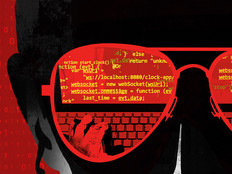Powering Up Savings

As the summer heats up and gasoline prices continue to rise, the cost of power is one topic that isn’t going away anytime soon.
Yet while public-sector IT leaders may know the costs of cooling their homes and purchasing a gallon of gas, many are oblivious to what it costs to power a single server, let alone the massive server farms many government agencies operate.
As the summer heats up and gasoline prices continue to rise, the cost of power is one topic that isn’t going away anytime soon.
Yet while public-sector IT leaders may know the costs of cooling their homes and purchasing a gallon of gas, many are oblivious to what it costs to power a single server, let alone the massive server farms many government agencies operate.
Electrical costs don’t fall under the IT budget for most state and local governments. That’s the bailiwick of the facilities management folks — and rarely do these two teams meet. But that’s about to change.
Power costs are a large and growing part of overall IT expenditures. A recent IDC study estimated that the electrical cost of powering and cooling data centers worldwide would reach $44.5 billion by 2010, or roughly 70 percent of new server spending. And as more organizations such as law enforcement agencies in San Jose and Florida scrap paper-based systems (see story on Page 28), the Environmental Protection Agency expects power consumption in big data centers to increase further.
In another recent study, McKinsey & Co. points out that servers run at just 6 percent of capacity on average, and energy consumption isn’t typically factored into the total cost of ownership of server resources.
Virtualization is one powerful tool for maximizing computer resources and addressing power consumption. For more on how server and storage virtualization are paying off for Charlotte County, Fla., turn to Page 41. The county estimates it has more than halved hardware costs and reduced the time it takes to build a new server from six hours to 20 minutes. In “Transit Modernization” on Page 37, Capital Metropolitan Transportation Authority of Austin, Texas, talks up how it streamlined operations by replacing desktop PCs with lower-cost thin clients. That agency also turned to desktop virtualization to make it easier to manage and provision new systems.
There’s no doubt power consumption contributes significantly to the cost of running technology services. Input reports that at least 27 states face budget deficits due to tax revenue declines and skyrocketing fuel costs, making efficiency gains and cost reductions all the more critical.

Lee Copeland, Editor in Chief
leecop@cdw.com
CDW•G Poll
The U.S. Environmental Protection Agency estimates that data centers with computing, network and data storage equipment consumed about 60 billion kilowatt-hours of electricity, or 1.5 percent of the total U.S. electricity bill, in 2006.
Do you monitor the electrical consumption of your computer systems?
- 88% No
- 9% Yes
- 3% Don't Know






